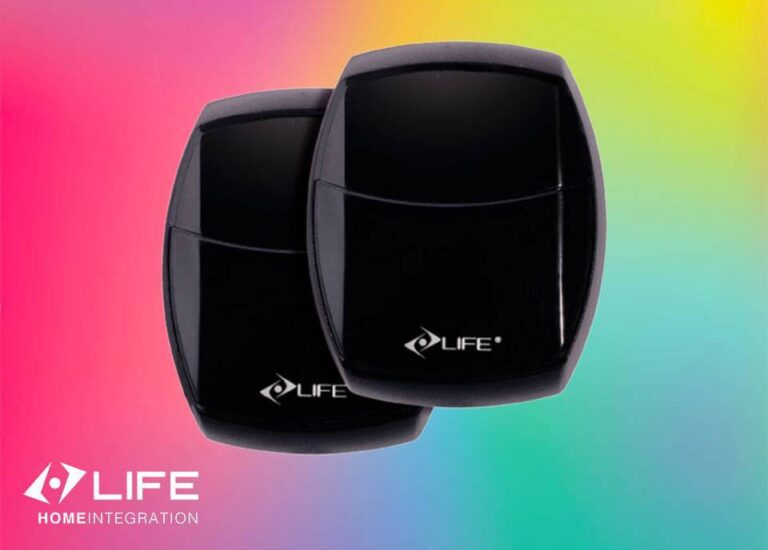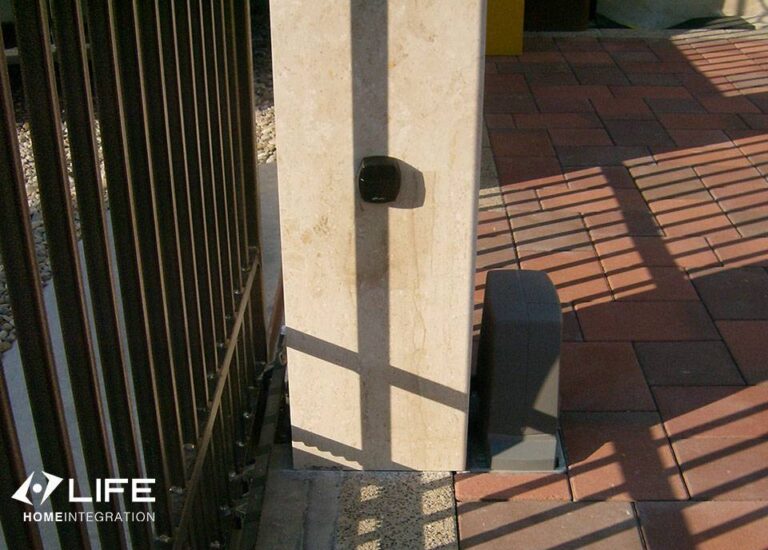Gate photocells: operation, maintenance and tips for choosing them
Imagine coming home, opening your gate with the remote control, driving up the driveway and discovering, only once the bonnet is past the entrance, that your dog has decided to comfortably lie down in the middle of the garden blocking your way. You’d stop at the instant, that’s for sure: but what if the gate were to start closing after a few seconds because it is only time-adjusted? There would be a serious risk of getting the side of your car scratched.
Not to mention devices of this type and children, because situations (which are anything but infrequent, as we know!) in which the game consists in getting quickly to the other side, just before the gate closes completely, could lead to dramatic consequences.
It is perhaps because of these true stories that we came to understand the basic importance of photocells for automatic gates (whether sliding or swinging), when we realised how they directly impact on the issue of safety.
WHAT PHOTOCELLS ARE AND HOW THEY WORK
Let’s start out with a general definition so we know what we are talking about.
The photocell is an electronic device that exploits the photoelectric effect, a phenomenon whereby
a metal struck by luminous radiation having certain characteristics releases electrons,
thus generating electric current.
Photocells have a variety of applications: they are used in the manufacture of automatic gates and doors, for alarms and for anti-theft devices, or even as a multiplier, which is a tool used to amplify the effects of light radiation.
There are many different fields of application: in this article we’ll not stray from our specific topic and are going to take a look at photocells for both swing and sliding automatic gates. Normally there are two photocells – a transmitter and a receiver – which are always placed facing each other to ensure that the automated system does not strike people, animals or equipment obstructing its way as it moves.
The mechanism is quite simple: the transmitter sends to the receiver a beam of infrared light and when this beam is interrupted (when someone or something gets in the way of the photocells), it instructs the control unit to stop the motor (or motors).
These devices are exposed directly to the environment and can sometimes stop working; the problem can often be solved with simple measures without it being necessary to replace the photocells.
Below is a short list of the main checks to be performed to make sure everything runs smoothly:
- Remove the plastic covers from the photocells to make sure that the electronic boards inside them are clean and free of cobwebs, insects or anything else that might prevent their normal operation.
- Make sure that there are no foreign bodies obstructing the photocells’ range of action: any climbers, weeds and flowers growing in front of the photocells may hinder the gate’s efficiency.
- If the photocells are wireless or have at least with one wireless element (generally the transmitter), you might need to replace the batteries.
- Check that transmitter and receiver (the 2 parts of the photocell) are properly aligned and have not been moved out of place.
After having given you these general suggestions, let’s take a close look at the Life range.
The photocells for automatic gates and the selectors offered by LIFE Home Integration differ from other solutions on the market particularly in terms of their resistance over time and robustness, guaranteed above all by the fact that they are built with plastics designed and manufactured directly at the company’s headquarters in the province of Treviso.
According to the LIFE approach, the “100% Made in Italy” quality should not only apply to the motors, but to the entire product range, including photocells and selectors.
Issues like moisture finding its way into the photocells, breakdowns caused by poor quality plastic or malfunctions due to cheap electronics simply do not arise with LIFE Home Integration products.
Visio and Vire are the LIFE Home Integration photocells. Both are synchronised with relays and differ according to their type of application. The Vire model can be set inside the Rex pillar supports which are available in various sizes and come in a double-height version for the transit of heavy-goods vehicles.
The range of selectors consists of various models: key-operated selectors such as DES and DESE, digital DIXES selectors or the innovative WI, a practical wireless solution with a Rolling-code coding system. The WI keypad selector is the only model on the market that can store as many as 16 different codes to be linked to sixteen different devices. The standard capacity for memorisation is limited to only 4 codes.
The WI selector is another example of how LIFE privileges practicality and quality among its values which, day after day, year after year, inspire the creation of its entire product range.

